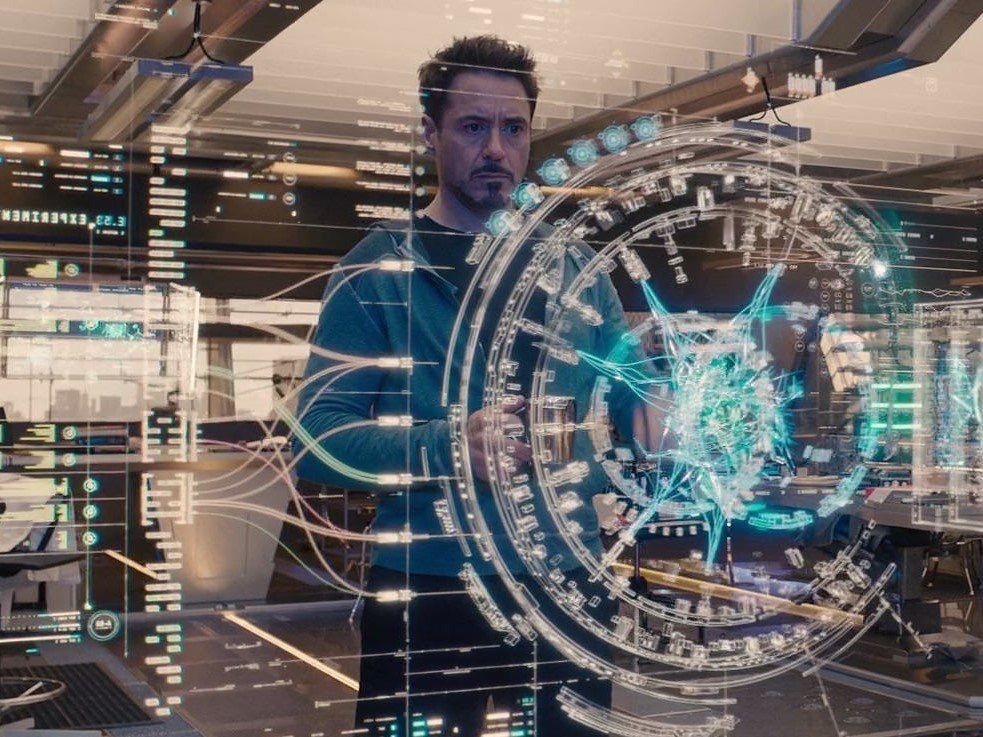We might not be there yet, but someday we may recreate Tony Stark's Haptic Technology.

Pavani Mantripragada
December 14, 2022. 2 minute Read
The desirable aspect of Tony Stark’s lab is the holograms, screens, and voice commands. He can create 3-D maps and view an atom’s state’s interior, sub-atomic parts, and connecting force. We know it. At least once in our life, we wish to have a similar technology; this is an excellent example of haptic technology. Recently, MIT has tried to recreate a similar technology to that of Tony Stark but has yet to be able to reach that level.
What is Haptic Technology?
The devices that associate with humans through touch are called haptic technologies—for example, mobile screens. Our mobile screens work through touch sensation. When we click on our screens for typing, a specific vibration is returned, telling us it is working; this is what haptic technology is all about.
One movie which could recreate the feeling of being hit was Raone which seemed natural due to the stimulation associated with touch. Similarly, in 5D, theaters can play the effect of snow, storm, rain, lightning, thunder, etc., to give them a more fantastic cinema experience.
The word haptic comes from the greek word haptikos which means the ability to grasp or touch. The most used area of haptics is in Virtual Realities games. But it is being tried by biomedical industries to create a technology in haptics that will allow physically disabled people to feel the sensations that they wish to feel.


The Sense of Touch Is Important To Human
All our life, we have thoroughly underestimated the gift of touch. The receptors put the sensation of “touch” are highly disproportionate in the body. Hence, we use a large part of the brain to process touch. There are specific receptors that give you detailed information about texture and feel. They’re called Markel Endings. They’re present on fingertips and lips.
A blind person generally sees the world through touch. That is efficient enough to explain how important the sense of touch is. Touch is also a way to express feelings. It can calm an agitated person or create a complete understanding of fear.
You can even hypnotize animals through touch.
If you notice, newborn babies are often very close to their mothers. The very touch of their mother calms the baby, and the baby can comprehend the affectionate touch of a mother. A large part of a baby’s development occurs through touch. Essentially, the baby recognizes their mother through the touch. Babies sleep more peacefully when in contact with their parents rather than in a cradle.

The Future of Haptics
Haptics is an umbrella term used for haptic technology and haptic feedback. Haptic Technology is the one where you can feel the technology through touch. Haptic Feedback is where the technology can feel you took. A fitness watch monitoring your heartbeat through your wrist is Haptic Feedback. The watch monitors the heartbeat by feeling your pulse at the wrist.
Haptics has a limitless future. You can dream of achieving many things through it. We may create virtual realities in their most excellent forms where all we see can be touched and felt, just like in Steven Spielberg’s movie Ready Player One.
Haptics is being heavily used in devices to create a more realistic effect for the user because the emotional language of a human is touch, not words. When we are ecstatic, we hug people; hugs console us when we are sad. Another reason for using haptics is to grasp information when our other senses are busy.
Who would not want to be able to touch Toothless from How To Train Your Dragon or Direwolves from The Game of Thrones?
Haptic has a bright future because there is ample space where humans and machines can communicate through touch. Machines can tell the user’s intent through touch. Its future isn’t just in using it in the VR Gaming sector but in wellness, the industrial sector, and space search.
Future of Haptic in Wellness Industry
We can use haptics in wellness. Still, trying to figure it out? But there’s literature to prove that haptics can help mental and physical well-being by considering the associated factors with anxiety and stress. For example, when you felt down and disturbed with your professional life, a warm hug from your parents or siblings would surely help you feel better. So, if a machine could recreate that feeling artificially, it would enhance your mental well-being even if you are far away from your family.
Final Thoughts
Haptics has a bright future and has quite some demand in the market. Experts estimate that the haptics sector will rise by 12% by 2026.
Why wouldn’t you want to know exactly how the moon would feel under your feet? Or how would it feel to sit on a Dragon? The imagination is limitless. So is the reach of technolo
Newer Post
Subscribe to new post
The One Liner
Useful Links
Order Related Queries
Useful Links
Order Related Queries


